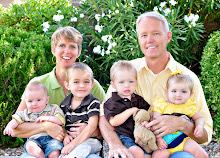WALKS THROUGH SNOW CANYON. (Southern Utah)
It’s still early in the day, yet not early enough
to feel the cool breeze like a touch of a gentle caress.
The cliffs of the eastern wall appear blue, almost black.
On the sunny side the sandstone glows in bright cinnabar red.
Summer’s heat arrives fast in the canyon.
The comfort of shadows does not last.
I am scrambling up hill on a narrow trail,
step by step through powdery red sand,
Over sharp edged black lava rocks
and grayish sandstone boulders
slanted across the path like giant turtle backs.
A rustle in the sage brush lets me stop and listen.
Two, no even four Roadrunners cross my path.
They find refuge in the thicket of shrub live oak.
This is THEIR Territory, where they live,
lay eggs and hatch their chicks.
And the chicks grow up, and don’t know anything else.
And the cycle goes on and on.
A bunny rabbit scurries the other way.
Instantaneously disappears behind a cluster of yucca,
which is now in full bloom.
I walk my way higher up over rubble of stones,
stepping carefully from boulder to boulder.
And down again, on a huge rock,
polished by wind and water over thousands of years.
I reach the sandy floor of a narrow side canyon.
Hackberry trees with lush green leaves give shade.
The walk is cumbrous in the dry sand.
Exhausted I rest in the coolness of the trees’ shadow.
A squirrel jumps from branch to branch,
munching on the soft leaves,
which provide the only moisture on these dry hot days.
Mighty sandstone columns spiral straight up to both sides.
They look as if glued together, varnished with a coat
of black laquer, from basalt lava flow,
which may have happened a million years ago.
On return I choose a different trail.
Carefully placing my steps through an array of stones,
and scattered black basalt plates toppled over.
Above me a huge boulder slanted, hanging on
to the edge of a rock wall, almost ready to fall down.
But time in geological measure is slow.
It might stay there, daringly lopsided for another millennium.
A lizard whisks by over the black surface.
For an instant it stops, shows off it’s amazing beauty.
The tiny sage green speckles on it’s back fluoresce in the sun.
The desert flora woke up after springtime rain.
Torch cactus opened it’s magnificent purple flowers.
Penstemon, and fire red desert paint brush between rocks,
and yellow Utah daisies bloom along the trails.
A ground squirrel slips out of a tiny hole.
It carries a pebble in it’s mouth,
then drops it, stands up on it’s hind legs to look at me.
Startled it whisks back into the hole.
I wait, but it doesn’t show up anymore.
Eventually the trail connects with a paved bike road.
Tired of scrambling I take the easy way.
Meanwhile the temperature rose to the 90s.
Shade is now rare at midmorning.
I turn my eyes towards the glaring sun and squint.
Natural shapes become symbols of eternity.
Cliffs and petrified sand dunes formed the canyon
over a million years ago, when the earth was still resilient,
and the core of hot magma bubbled up to the surface.
Large rounded mounds of Navajo Sandstone
with layers of red and yellowish color,
like giant scoops of vanilla and strawberry ice-cream
touch the horizon in distance.
Again I gaze at the rock walls’ grotesque figures
which nature has formed by wind and water.
Respectfully I greet a ghostly apparition,
an anonymous head, crowned with a petrified turban,
though it seems to be more a skull than a face,
I call him Mohammed of Snow Canyon 3
His empty eye sockets are staring at me.
I wonder since how many millenniums he looks down from his throne
He might have seen dinosaurs roaming through lush vegetation.
Volcanoes erupting, Anasazi Indians gathering prickly pear fruits,
and scratching cryptic signs in the basalt coat of the sandstone.
Eventually modern time humans appeared,
Mormon pioneers rediscovered the canyon,
and named it SNOW CANYON,
after Lorenzo and Erastus Snow, who were prominent Utah leaders.
And finally people of the 20st century came
with their machines to Snow Canyon’s wilderness.
And they built paved roads and parking lots
with stop signs of a different red.
Was the “improvement” good or bad? We don’t know for sure.
But surely it made Mohammed ‘the apparition of Snow Canyon’ sad.
-------------
For just an instant I am a wanderer in an ancient world,
in a landscape created by wind and water,
by volcanic eruptions and lava flows.
I feel small like the lizard that had crossed my path,
or the ground squirrel which leapt out of an earth hole.
I feel like an intruder into a sacred wilderness.
Yet I came FOR THE LOVE OF NATURE
though ashamed of using the paved road
of modern civilization for better convenience.
-Anna Winkler
May 2007






























1 comment:
Wow. She said that perfectly.
Post a Comment